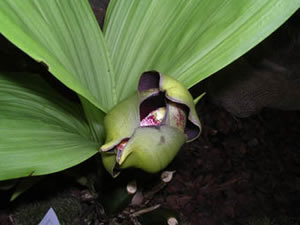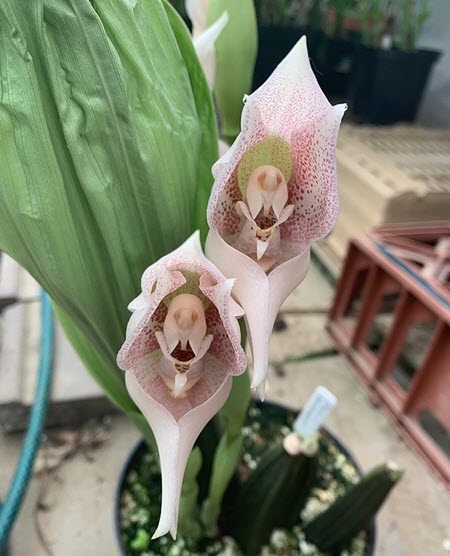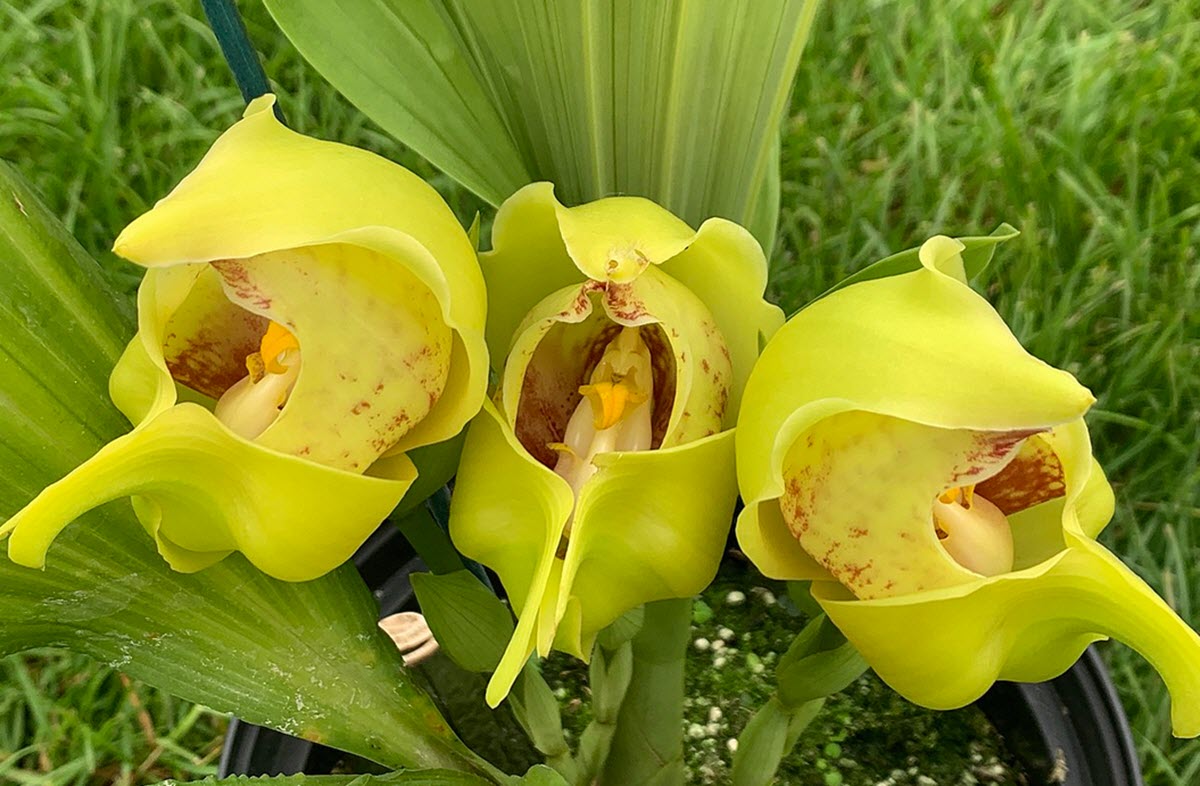Anguloa Orchid Care
Contents
The Anguloa orchids are certainly not among the most commonly kept orchids and you might have to do some detective work to find a seller if you want to try keeping Anguloa orchids. The orchids from the genus Anguloa are known as Tulip Orchids and they are closely related to the Lycastes orchids.

Anguloa orchid
Some Anguloa orchids are terrestrial while others are epiphytic, which means that it is hard to give any general Anguloa orchid care recommendations without knowing which group your particular orchid belongs to.
Anguloa orchids are comparatively large orchids and their fleshy pseudobulbs can exceed 20 cm in length. The lanceolate and plicate leaves are also very large and can be over 1 meter long. The leaves of the Anguloa orchids are decidous and are shed when new growth starts. Two to four leaves form at the base of each individual pseudobulb.
Anguloa orchid flowers can be yellow to red or have a greenish white shade. They have a waxy look and the sepals have a bulbous shape that resembles a tulip, hence their common name Tulip Orchids. From the base of each new pseudobulb a single flower will develop per inflorescence. The orchids that produce greenish white flowers always have six inflorescences per pseudobulb, while the orchids that have yellow to red flowers can develop twice as many inflorescences for each pseudobulb. The lip of the flower is always three-lobed and the column has four pollinia.
Watering
Anguloa orchids live on the forest floor in the mountains of Venezuela, Colombia and Ecuador. It is recommended to find out from which region your particular species hail and mimic the downpour conditions of that specific part of South America. It is hard to give any general guidelines regarding Anguloa orchids since their exact requirements differ from species to species. If you fail to find out the name of your species you can follow the watering recommendations for Anguloa clowesii, since a lot of Anguloa species have somewhat similar requirement. Anguloa clowesii grows in the mountains and is used to very moist conditions at the roots. It is native to parts of Colombia and Venezuela where there is a dry season and a wet season each year. Anguloa clowesii appreciates to get plenty of water, especially during the growth season. You should never allow med substrate to dry out completely. During the winter months, from late November to the middle of January, you should however keep the roots drier than normal. When you can notice new growth around the base of the old pseudo bulbs, it is time to start watering more frequently again.
Nutrients

Anguloa virginalis
A lot of the Anguloa orchids are heavy feeders that need a lot of nutrients. If the leaf tips look burned, you are however over feeding them. Use more fertilization during spring and summer, less during fall, and no fertilizer at all during at least 6-8 weeks of the winter season (the dry period when you cut back on water as well). Quite a few Anguloa orchids appreciate 20-10-20 fertilizer but the exact requirements vary from species to species.
Temperature
Anguloa orchids are tropical orchids from South America but they grow at high elevations and they are therefore used to a fairly cold environment. Most species appreciate a daytime temperature around 75-80 degrees F (24-27 degrees C), but want significantly cooler nights in the 55-62 degrees F (13-17 degrees C) range.
Light
Anguloa orchids grow on the forest floor and are therefore used to being shaded. During the dry season all the deciduous trees will however drop their leaves and this leads to more sunlight for the orchids. Some Anguloa species grow on hillsides where they receive full sun during parts of the day year round. As you can see, it is important to research your particular species to find out its requirements.
Potting medium
Some Anguloa orchids are terrestrial and some are epiphytic and this will naturally have a large impact on the recommended potting medium for Anguloa orchids. Terrestrial species grow in soil, while epiphytic Anguloa orchids grown on tree branches and similar. Epiphytic orchids should never be planted in ordinary soil since it will be too soggy for them. Use an orchid bark mix or let your plant grow clinging to something.
Repotting Anguloa orchids
The recommendations regarding Anguloa orchid repotting varies from species to species. Always repot right away if the medium stops draining well, becomes infested with mould or other types of fungi, or starts to emit a foul smell.

Anguloa cliftonii
Anguloa orchid trivia!
The Anguloa orchids are named after Francisco de Angulo, an avid orchid devotee from Peru. He worked as a director-general of Peruvian mines at the end of the 18th century. Another interesting piece of trivia about the Anguloa orchids is that their flowers emit a strong cinnamon scent.